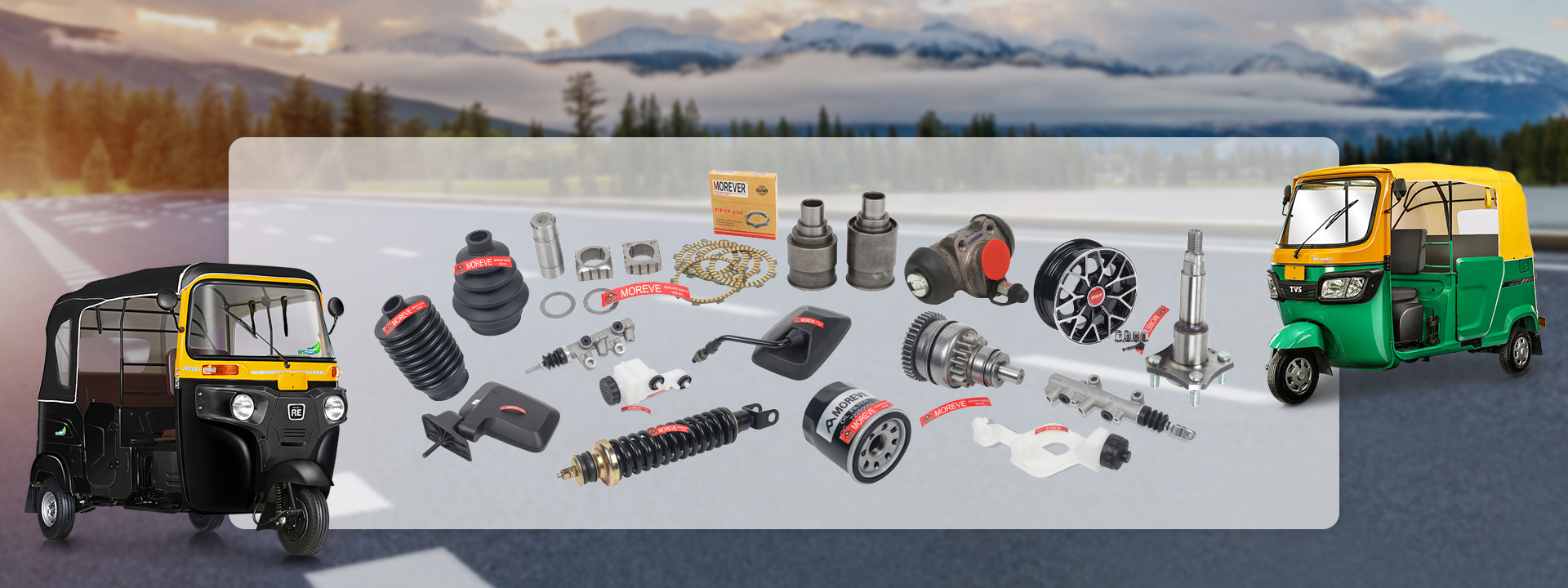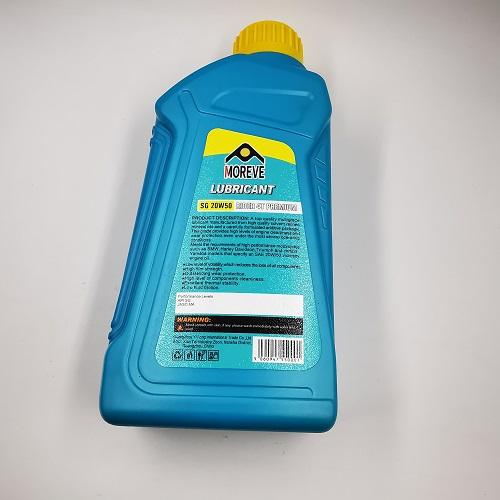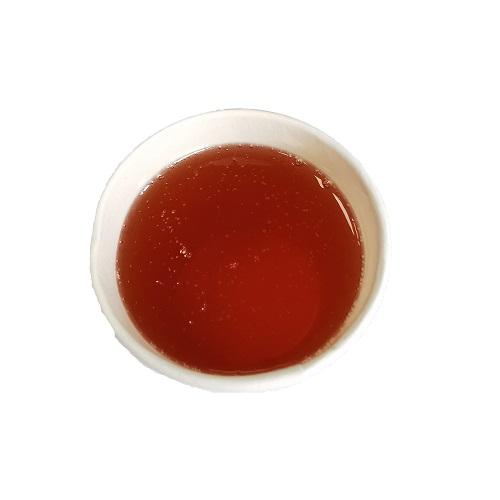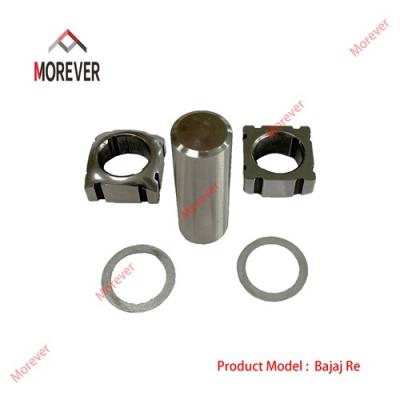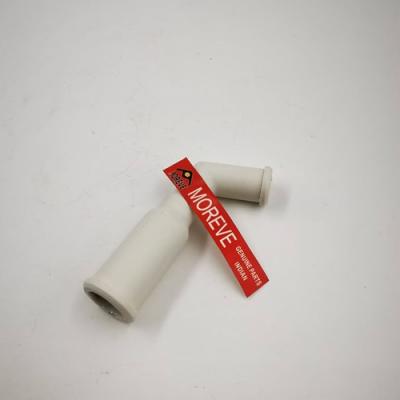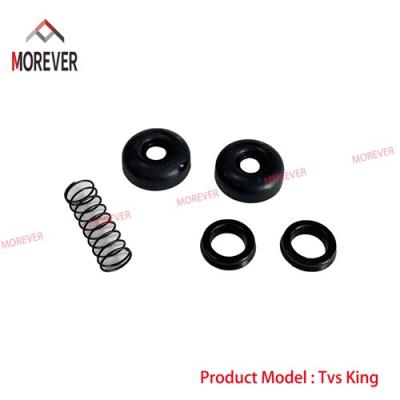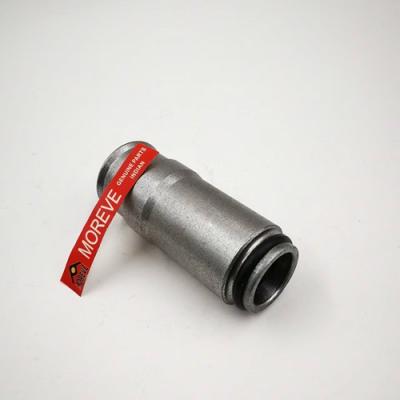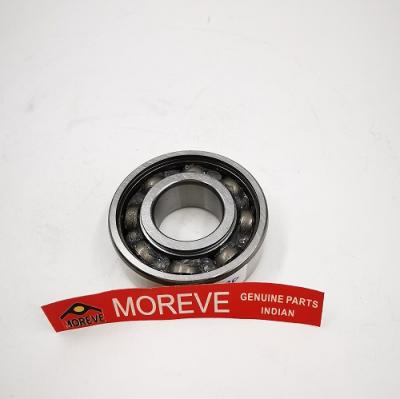Bajaj Tvs three wheeler taxi special formula engine oil
SL20W50
20W: W stands for "Winter", 20W indicates the fluidity of the oil at low temperatures, and is suitable for environments with a minimum temperature of -15°C510.
50: Indicates the kinematic viscosity of the oil at 100°C. The higher the value, the greater the viscosity and the better the protection performance at high temperatures510.
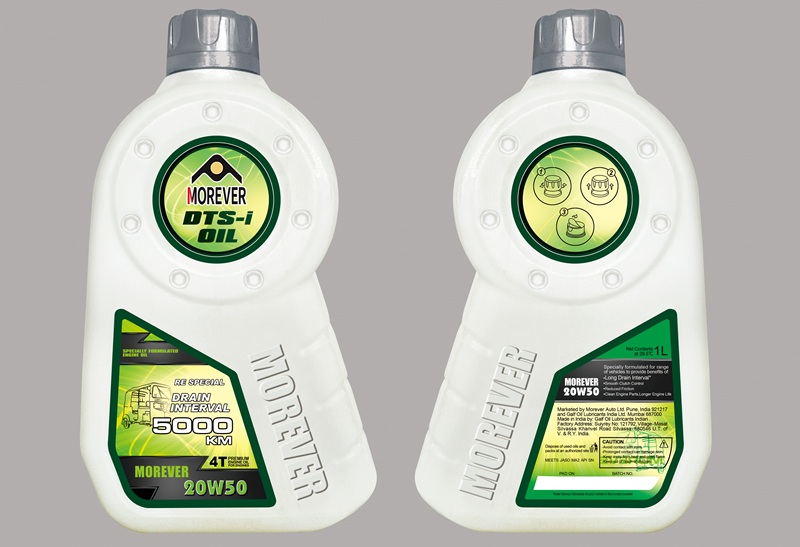
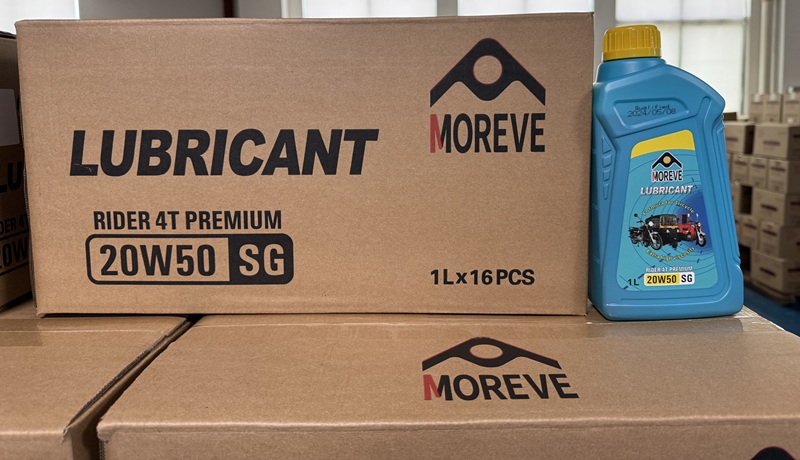
How long we should change the oil of Bajaj taxi
The lubricant replacement cycle of various vehicles mainly depends on factors such as the type of lubricant, the vehicle usage environment and driving habits. The following is a detailed classification description:
1. Lubricant type and replacement cycle
Mineral oil:
Replacement cycle: 5,000 kilometers or half a year.
Features: Low cost, but poor durability, suitable for old vehicles or low-load conditions.
Semi-synthetic oil:
Replacement cycle: 7,500 kilometers or 7-8 months.
Features: Better performance than mineral oil, suitable for most daily driving vehicles.
Fully synthetic oil:
Replacement cycle: 10,000 kilometers or 1 year.
Features: Best durability and performance, suitable for high-performance vehicles or harsh driving environments124.
Advanced fully synthetic oil (such as Titanium Series):
Replacement cycle: 20,000 kilometers.
Features: Suitable for high-end vehicles or extreme driving conditions10.
2. Impact of vehicle use environment
Harsh environment (such as high temperature, high altitude, dusty):
Replacement cycle should be shortened, especially for mineral oil and semi-synthetic oil.
Short-distance driving in the city:
Frequent starting and stopping will cause the oil to deteriorate faster, so it is recommended to shorten the replacement cycle.
High-speed long-distance driving:
Fully synthetic oil performs better, but it still needs to be checked regularly.
3. Adaptation of vehicle type and lubricant
Ordinary family car:
It is recommended to use semi-synthetic or fully synthetic oil, and the replacement cycle is 7500 km to 10,000 km.
High-performance car or luxury car:
It is recommended to use fully synthetic oil, and the replacement cycle is 10,000 km to 20,000 km.
Old vehicle:
Mineral oil or semi-synthetic oil can be used, and the replacement cycle is 5000 km to 7500 km.
4. Other precautions
Check the oil status regularly:
Check the oil color and viscosity through the oil dipstick, and replace it in time if abnormalities are found.
Follow the vehicle manual recommendations:
Different models have different requirements for engine oil, and you need to refer to the vehicle manufacturer's recommendations.
Extreme driving habits:
If you frequently accelerate suddenly, overload or tow, you need to shorten the replacement cycle.
Summary
The lubricant replacement cycle needs to be determined based on the type of engine oil, vehicle usage environment and driving habits. Mineral oil is generally 5,000 kilometers or half a year, semi-synthetic oil is 7,500 kilometers or 7-8 months, fully synthetic oil is 10,000 kilometers or 1 year, and advanced fully synthetic oil can reach 20,000 kilometers. Regularly checking the engine oil status and following the vehicle manual recommendations can effectively extend the engine life and ensure driving safety.
The formula of small-displacement high-speed engine
The formula of small-displacement, high-speed motorcycle engine lubricant needs to be optimized for its unique working conditions to ensure stable operation of the engine at high speed, high temperature and high load. The following are the main features of its formula:
1. High wear resistance and lubricity
Features: The engine speed of small-displacement, high-speed motorcycles is usually high (up to 10,000 rpm or more), and friction parts (such as pistons, cylinder walls, crankshafts, etc.) are prone to wear at high speeds.
Formula requirements: Lubricants need to be added with efficient anti-wear additives (such as zinc and phosphorus compounds) to form a stable oil film at high speeds, reduce direct contact between metal parts, and reduce wear39.
2. Excellent high-temperature stability
Features: High-speed engines have high operating temperatures, especially air-cooled engines, with poor heat dissipation conditions, and lubricants are prone to oxidation and deterioration.
Formula requirements: Lubricants need to have good high-temperature antioxidant properties, and antioxidants (such as phenols and amine compounds) are usually added to delay oil oxidation and maintain stable lubrication performance25.
3. Good clean dispersibility
Features: High-speed engines are prone to carbon deposits and sludge, which affect engine performance and life.
Formula requirements: Lubricants need to be added with efficient detergent dispersants (such as calcium-magnesium compound detergents) to effectively remove carbon deposits and sludge inside the engine and keep the engine clean59.
4. Suitable friction characteristics
Features: Motorcycle engines usually use wet clutches, and lubricants need to take into account both lubrication and clutch friction properties.
Formula requirements: Lubricants need to have a suitable friction coefficient to ensure smooth engagement of the clutch and avoid slipping. Friction modifiers are usually added to meet this requirement911.
5. Low-temperature fluidity and quick start protection
Features: Small-displacement motorcycles are often used for urban commuting and need to start quickly in low-temperature environments.
Formula requirements: Lubricants need to have good low-temperature fluidity (such as low-viscosity base oil) to ensure that they can quickly reach the lubrication parts at low temperatures and reduce cold start wear28.
6. Low volatility and long-lasting performance
Features: High-speed engine lubricants are prone to volatilization due to high temperatures, resulting in a reduction in oil volume.
Formula requirements: Lubricants must use low-volatility base oils and add anti-volatility additives to extend oil change cycles and reduce the need for frequent replenishment59.
7. Environmental protection and energy saving
Features: Modern motorcycle lubricants must meet environmental protection requirements and reduce harmful emissions.
Formula requirements: Use low-sulfur and low-phosphorus formulas and add energy-saving additives to reduce friction resistance and improve fuel economy79.
Summary
The formulation design of small-displacement, high-speed motorcycle engine lubricants needs to comprehensively consider factors such as anti-wear, high-temperature stability, cleanliness, friction characteristics, and low-temperature fluidity. Through scientific formulation design and strict performance testing, ensure that the lubricant provides comprehensive protection for the engine under high-speed, high-temperature and high-load conditions, extend engine life and improve performance
SL20W50 lubricants for Bajaj Re
SL20W50 is a lubricant. The "SL" and "20W50" in its name represent the API quality grade and SAE viscosity grade respectively. The following is a detailed interpretation of the API standard quality indicators of SL20W50 lubricant:
1. API quality grade: SL
SL is one of the lubricant quality grades established by API (American Petroleum Institute) and is a special oil for gasoline engines. It is a standard introduced in 2001 and is currently a lower grade, lower than SM and SN grades 18.
Characteristics of SL grade oil:
Suitable for small displacement gasoline engines.
Not as good as SM and SN grades in environmental performance. For example, SL oil has a higher zinc and phosphorus content, which may lead to more pollutant emissions
Usually mineral oil or semi-synthetic oil, fully synthetic oil rarely uses SL grade
2. SAE viscosity grade: 20W50
20W50 is a viscosity grade established by SAE (Society of Automotive Engineers), which indicates the fluidity of the oil at different temperatures:
20W: W stands for "Winter", 20W indicates the fluidity of the oil at low temperatures, and is suitable for environments with a minimum temperature of -15°C
50: Indicates the kinematic viscosity of the oil at 100°C. The higher the value, the greater the viscosity and the better the protection performance at high temperatures
Features of 20W50 oil:
Suitable for high temperature environments or high load conditions, such as turbocharged engines, old vehicles or owners who like violent driving
High viscosity and good sealing performance, but may increase fuel consumption and noise
3. Comprehensive performance of SL20W50
Applicable scenarios:
Suitable for older gasoline engines, especially under high temperature or high load conditions.
Applicable to areas south of the Yellow River and north of the Yangtze River, where the minimum winter temperature is not less than -15℃
Performance characteristics:
Provides good high temperature protection and sealing performance, but poor environmental performance
Usually mineral oil or semi-synthetic oil, the oil change cycle is short, generally about 5000 kilometers
4. API certification and quality assurance
API certification ensures that the lubricant meets strict quality and performance standards, including low temperature fluidity, high temperature cleanliness, oxidation resistance, wear resistance, etc.
If SL20W50 engine oil is API certified, it will be marked with the API double ring logo on the packaging, indicating that it meets API standards2.
5. Usage recommendations
Selection basis:
Select according to the oil grade and viscosity recommended in the vehicle manual.
For old vehicles or high-load conditions, SL20W50 is an economical choice, but for new vehicles or vehicles that require higher environmental standards, it is recommended to choose a higher grade of engine oil (such as SN or SP)
Note:
Replace the engine oil and oil filter regularly to ensure the normal operation and life of the engine.
Summary
SL20W50 lubricant is a lubricant suitable for small gasoline engines. It has good high temperature protection performance, but poor environmental performance. Its API quality grade is SL and SAE viscosity grade is 20W50. It is suitable for high temperature or high load conditions. The selection should be based on the vehicle model and the use environment, and pay attention to regular maintenance.
Internationally renowned lubricant additive brands
Lubricant additives are key ingredients to improve lubricant performance. There are many well-known brands in the world that focus on additive research and development and production. The following is an overview of internationally renowned lubricant additive brands and their main formulas:
I. Internationally renowned lubricant additive brands
Lubrizol
Introduction: Founded in 1928 and headquartered in Ohio, USA, it is the world's largest lubricant additive company with a market share of approximately 33%
Main products: gasoline engine oil, diesel engine oil, automatic transmission fluid, marine lubricant and other compound additives
Technical advantages: Focus on the research and development of lubricant and fuel additives, and its products cover more than 100 countries
Infineum
Introduction: Founded in 1999, it was formed by the merger of the additive businesses of ExxonMobil and Shell. It is the world's second largest lubricant additive supplier
Main products: pour point depressants, engine oil compound additives, viscosity index improvers, antioxidants and anti-wear agents, etc.
Technical advantages: Leading in ashless dispersant and metal detergent technology.
Chevron Oronite
Introduction: Founded in 1917, it is the third largest lubricant additive supplier in the United States, focusing on the research and development of compound additives16.
Main products: gasoline/diesel engine oil compound additives, natural gas engine oil compound additives, etc.6.
Technical advantages: It has multiple technical centers around the world and focuses on the research and development of catalysts and lubricant additives6.
Afton
Introduction: Founded in 2004, it was formerly the petroleum additive business of Ethyl Company, and its product lines cover automotive oil and industrial oil16.
Main products: automotive oil additives (accounting for 55%), drive system oil additives (accounting for 26%).
Technical advantages: It has significant advantages in the field of automotive oil additives.
2. The main formula of lubricant additives
The formula of lubricant additives usually includes the following functional ingredients:
Cleaning dispersant
Function: Remove sediment inside the engine and prevent sludge and carbon deposits from forming.
Common ingredients: calcium alkylbenzene sulfonate, sulfurized alkylphenol salt, etc.
Antioxidant
Function: Delay the oxidation process of lubricating oil and extend the service life.
Common ingredients: phenols, amine compounds .
Antiwear agent
Function: Reduce friction and wear on metal surfaces and protect engine parts.
Common ingredients: compounds containing sulfur, phosphorus, and zinc (such as ZDDP) .
Viscosity index improver
Function: Improve the viscosity stability of lubricating oil at different temperatures.
Common ingredients: polymethacrylate, polyisobutylene, etc.
Pour point depressant
Function: Reduce the pour point of lubricating oil and ensure low temperature fluidity.
Common ingredients: polymethacrylate, alkylnaphthalene, etc.
Rust inhibitor
Function: Prevent rust and corrosion on metal surfaces.
Common ingredients: sulfonates, amine compounds.
Antifoaming agent
Function: Inhibit the generation of foam in lubricating oil and ensure lubrication effect.
Common ingredients: Silicone oil, polyether, etc.
III. Characteristics of additive formula
Compound synergy: Multiple additives work synergistically to improve the comprehensive performance of lubricating oil510.
Precise ratio: The amount of additives used needs to be precisely controlled according to the type of base oil and the usage scenario. Excessive or insufficient amount will affect the performance.
Environmental protection trend: Modern additive research and development focuses on environmental protection performance and reduces the use of harmful substances (such as sulfur and phosphorus).
Summary
The international lubricant additive market is mainly dominated by four major brands: Lubrizol, Infineum, Chevron Oronite and Afton. Additive formulas include multiple functional ingredients such as detergent dispersants, antioxidants, anti-wear agents, etc., which improve the performance and service life of lubricating oil through compound synergy and precise ratio. For more detailed information, please refer to relevant sources
Distributor comments

Our Warehouse and Office



